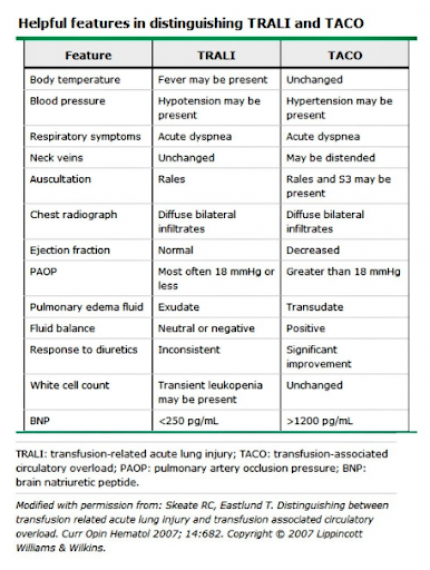Board Review: Potpourri
A 65 year old comes in with extreme fatigue in the setting of heavy vaginal bleeding. She is hemodynamically stable, and well-appearing but pale. You obtain blood work and find her hemoglobin is 5.9. You plan to transfuse 2 units of prbcs. During the second unit, the patient begins to become progressively more short of breath. You notice rales on exam, hypertension and JVD. The patient develops 1+ pitting edema at her ankles. Which of the following transfusion related reactions is the patient experiencing?
-
Hemolytic transfusion reaction
-
Transfusion-related acute lung injury
-
Transfusion-associated circulatory overload
-
Hypersensitivity reaction
Answer: C Transfusion-associated circulatory overload (TACO) is related to the volume of the blood transfusion. Extremes of age (young and old) are more at risk for this as well as females, history of pre-existing heart failure, and thin body habitus. Symptoms include those of a heart failure exacerbation i.e. progressive dyspnea, orthopnea, elevated blood pressure, edema. Treatment includes stopping the transfusion and diuresis.

Stroncek DF. Pulmonary transfusion reactions. Semin Hematol 2007; 44: 2–14.
Silvergleid AJ. Transfusion-associated circulatory overload (TACO). Post TW, ed. UpToDate. Waltham, MA: UpToDate Inc.
